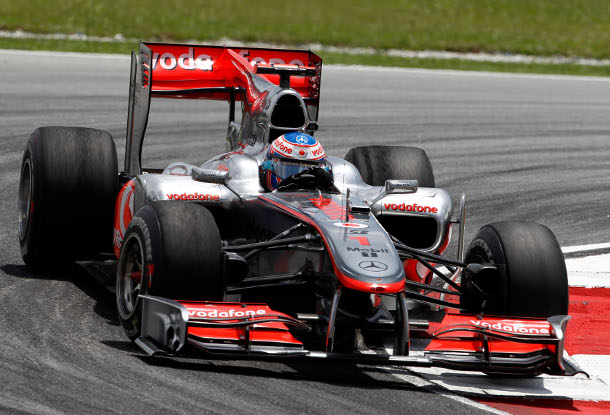In-memory analytics vs big data: Can SAP's Hana make sense of the information overload?

How it works and who's using it...
In-memory computing (IMC) is being sold as a way for enterprise to pluck useful insights from an ever-growing tide of corporate data, and of doing so in record time.
Business software vendor SAP has developed its own IMC platform called Hana. First announced in late 2010, Hana has now been rolled out to some 50 early-adopter organisations which are testing how the platform performs in a variety of data analytics tasks.
Hana, and other IMC platforms, processes data stored in computer memory rather than on a hard disk. Because of the speed at which data can be accessed from computer memory, and other technical differences such as the use of parallel computer processors to carry out data analysis, IMC systems can analyse data in a fraction of the time it takes using traditional relational databases stored on hard disks.

SAP customers are claiming Hana delivers a speed boost to big data analyticsPhoto: Vodafone McLaren Mercedes
Part of the way Hana is able to handle large datasets at speed is by reducing the amount of data in a database.
Hana stores some data differently to traditional relational databases - storing some data in columns rather than rows, which makes it easier to compress and reduces the amount of data that needs to be searched for certain queries. It also doesn't store data where there are empty fields in the database, reducing the overall size of the dataset.
Hana also cuts the amount of data that needs to be duplicated. In traditional data warehouses, data is stored in cubes that bring together information needed to answer specific questions - such as calculating stock levels in a region. This can result in the same data being stored many times in different cubes in order to answer different questions. Hana is fast enough to analyse the entire database without the need for separate data cubes - meaning data only has to be stored once.
"More responsive to the business"
Dutch animal nutrition company Provimi operates in 70 countries worldwide and deployed a Hana platform to carry out profitability analysis in October.
Provimi CIO Rogier Jacobs said the company is able to carry out queries a "couple of hundred" times faster than was possible using data stored in a traditional relational database in a SAP NetWeaver Business Warehouse system.
"If a report takes 20 minutes to run or more then that's not very responsive to the business," he said of its previous analytics set-up.
"The interaction with the system in terms of action-response doesn't suit the way we do business," Jacobs added.
"Now we can be more responsive to the business and can access better reports, so we can make better decisions and purchase more effectively. In due time we should be able to see that in figures and hard money - in lower inventory, lower working capital, better margins on deals and products," he said.
Provimi uses Hana to...
...extract profitability, sales and distribution and inventory tables data from its back-end SAP ERP system, keeping in constant sync with the latest data. It took Provimi less than three weeks to set up and copy over the initial data to Hana, and Jacobs estimates the company will achieve ROI in about one year.
Red Bull's experience
When drinks maker Red Bull put its 1.5TB data warehouse into Hana it reduced the size of the database by 80 per cent, the conference heard.
Christian Stoxreiter, head of business applications with Red Bull, said: "Data can be read directly out of the datacentre which means no more replication of the data cubes or business warehouse accelerators. We have a reduction of the total cost of ownership because we have a simplified [IT] landscape."
Hana allows organisations to query data directly without having to build data cubes for each new query, which eliminates the hours of preparatory work when carrying out analysis.
Migrating data to Hana took 10 days and was achieved without disruption to database access, Stoxreiter said.
Who really has the need for speed?
However, not every company will need the speed boost or big data handling capabilities that Hana brings to analytics.
Hana should be viewed as a high-performance analytics platform rather than a replacement for low-cost data warehouse systems, according to Alys Woodward, IS program manager for European business analytics, enterprise collaboration and social solutions at analyst IDC.
"Hana is a high-performance technology, and is not intended to be a rip-and-replace for inexpensive databases," she said.
"Its sweet spot is with organisations already running SAP and struggling with performance of SAP BW [Netweaver Business Warehouse] in particular.
"Although SAP doesn't use the term 'big data', essentially Hana is SAP's big data play. Big data is about high volume, high velocity, high variety and high-value data, and an increasing proportion of enterprise customers struggle with that."
Hana will also face competition from high-performance analytics platforms that were earlier to market, such as Oracle Exadata, IBM Netezza and HP Vertica, she said.
"The high end of the data warehouse market is becoming very crowded with these high-end appliances, and the large enterprises that are analytically mature are hugely sought-after accounts. This is because once organisations are aware of the value of business analytics, they will spend to obtain it, and likely achieve great ROI results," she said.
There is also the question of the cost of deploying Hana. SAP says it doesn't disclose general pricing for Hana because costs will vary, but technology consultancy Bluefin Solutions lists the hardware cost at around $100,000 to $200,000 per TB, with additional software licensing costs.